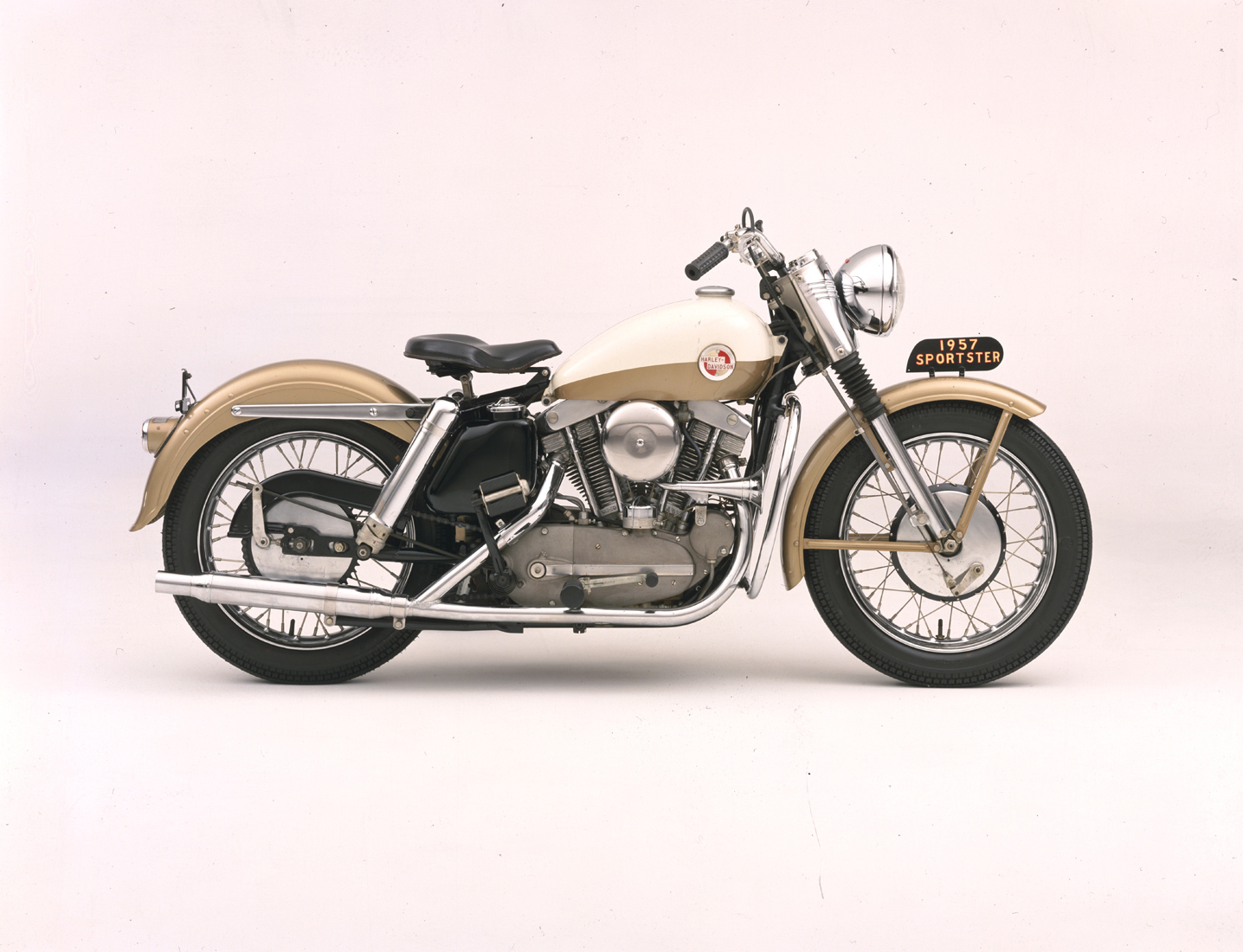Celebrating 60 years of Harley-Davidson Sportsters
By the late-1950s, demand had grown in the American market for a middleweight motorcycle with outstanding capability and versatility. With British bikes surging in popularity, Harley-Davidson countered. For 1957 it offered the XL Sportster, which many consider the first superbike and finest street motorcycle ever built. In fact, the Sportster has been in constant production for 60 years, with six models in Harley’s current lineup.
The Sportster’s introduction coincided with the appointment of new Vice President of Engineering William J. Harley, son of company cofounder William S. Harley. A University of Michigan engineering graduate, the younger Harley had already served 23 years in the company and displayed the vision to move H-D into a new era.
Harley-Davidson had long made middleweight bikes, as exemplified by the 1929 D-series, which used a 742-cc flathead V-twin. The 1952 K-series had an advanced chassis and suspension but used an 888-cc flathead that struggled to match performance of British bikes’ overhead-valve 650-cc parallel twins.


The K-series provided the basis for the Sportster, and the new bike brought with it a new overhead-valve engine. For $1,103—a $78 increase over the KH—the ’57 Sportster flaunted a stripped-down look on a compact 57-inch wheelbase. It emphasized the new 45-degree V-twin. In a nice flourish, the Sportster name was embossed on the bottom case.
Cylinder barrels and heads of the new 883-cc twin were of cast iron, earning the nickname Ironhead. Bore and stroke were 3 x 3 3/16 inches. A single-lobe cam operated each valve. The compression ratio was 7.5:1. Kicking the twin to life with fire coming from an ignition magneto produced a husky bellow and 40 horsepower at 5,500 rpm. Weighing about 500 pounds, the Sportster joined the fray with Triumphs and Nortons. Around 2,000 were sold.
The next year, the Sportster lineup added models and potency. The XLH had a higher-compression engine, while the XLCH offered newfound potential in track and trials events. This “Competition Hot” model had staggered dual pipes, peanut tank, and bobbed rear fender. In 1959, it sold for $1,285.
How formidable was the Sportster? Cycle World reported 122 mph as its top speed in 1962, but many wondered if that test was dubious. Nevertheless, the magazine concluded the XLCH “is clearly the fastest mass-produced motorcycle we have had.”

From inception, the well-specified Sportster lineup put all the basics in place. There remained plenty of room for improvement though, and over the next decades the bike saw many upgrades. As British rides went away and Japanese ones provided fresh and formidable competition, the Sportster incorporated important changes and features. There would be electric start, left-foot shifting, and a five-speed gearbox. Electronic ignition and fuel-injection were technological improvements, and rubber-isolation engine mounts helped to quell vibration. Belt drive was quieter than the original chain and needed little attention.
Harley-Davidson also experimented with different styling, so the Sportster XLCH donned a long dual saddle and white grips in 1964. The ’67 SLH tourer had a white saddle and passenger backrest, as well as a gaudy headlamp nacelle.
Even as the Japanese multi-cylinder revolution began, Sportster sales kept pace in the expanding market, soaring to 8,500 units in 1970. Harley remained competitive on the track, and Evel Knievel soared from ramp to ramp on an XR 750, giving the brand a cool factor (until the daredevil and a couple of henchmen assaulted a promoter with a baseball bat). The big shocker was the 1977 XLCR 1000, a café racer from the land of bratwurst and Pabst. This Sportster was so advanced it had siamesed pipes, front- and rear-disc brakes, and a bubble fairing. Curious but not popular. Sportster buyers wanted the all-American engine-with-two-wheels look, and the XLCR went away. There was also a limited-run Confederate Edition, which today seems like a terrible idea. Even with the occasional flop, Harley began selling more than 20,000 Sportsters annually.


As always, the quest continued for more power. In 1972, engine displacement increased to 997 cc. Then in 1986, after a period of mismanagement, Harley brought out its Evolution engine in medium (883-cc) and large (1,200-cc, eventually) displacements for the Sportster. Extensive use of aluminum resulted in a lighter, tighter, and more durable engine with better heat dissipation.
Harley took another risk in 1988 with the Sportster XLH 883 Hugger, a low-seat variant meant to entice new riders who may have previously been rear passengers. And the company explored trends and pushed the limits, as seen in such creations as the XR 1000, a racy streetbike, and the XL 1200N Nightster, with rat-rod styling. Today’s Sportsters comprise six models, ranging from the XL 1200T SuperLow touring bike to the XL 1200X Forty-Eight, which Harley calls an “urban brawler.”
Entering its seventh decade, the Sportster appeals more than ever, and that just shows the soundness of the original superbike’s formula.


